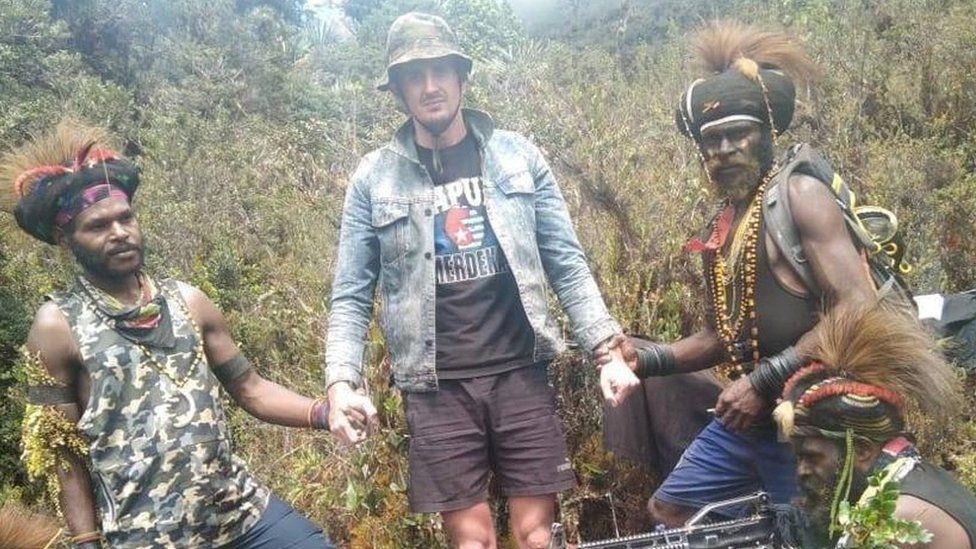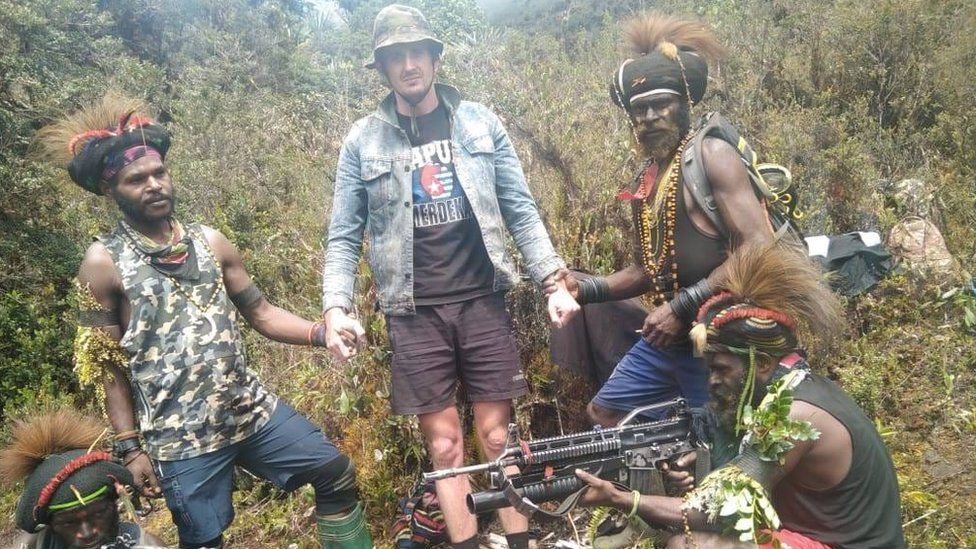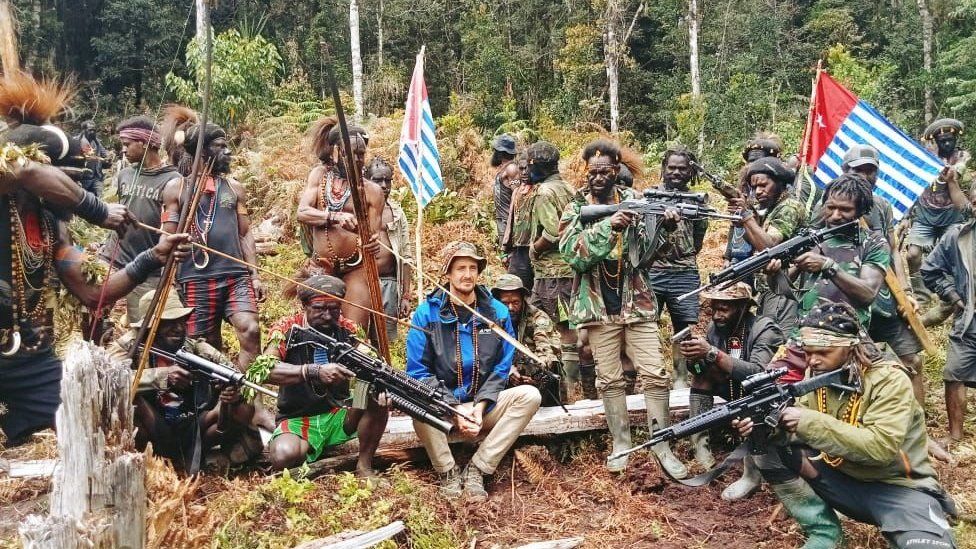
The kidnapping of a New Zealand pilot by separatists in Indonesia’s West Papua region has thrust a decades-old insurgency back into the spotlight.
Philip Mehrtens, 37, was taken hostage by West Papua National Liberation Army fighters (TPNPB) in February.
The rebels have been holding him captive as a political prisoner in the remote Nduga region and this week fatally attacked a number of Indonesian troops sent to rescue him.
Mr Mehrtens’ kidnapping is the latest flashpoint in a long-running, often brutally violent conflict between the Indonesian government and West Papua’s indigenous people.
What is West Papua?
Indonesia is divided into 38 provinces across thousands of islands.
West Papua is the easternmost territory. It is the western half of New Guinea, the world’s second largest island after Greenland, with Papua New Guinea (PNG) comprising the eastern half. PNG was granted independence from Australia in 1975.
West Papua has had a special autonomous status since 2001. Since June 2022, it has been divided into five provinces.

The resource-rich area includes the world’s largest gold mine, as well as extensive sources of natural gas, minerals, timber and palm oil.
West Papua has a population of more than 5.4 million people. The indigenous Papuans, who are Melanesian, are now thought to be outnumbered by settlers from other parts of the archipelago. Indonesia is ethnically very diverse, with the Javanese at around 100 million the largest group.
Why is there conflict in West Papua?
When Indonesia’s independence from the Netherlands was agreed in 1949, West Papua remained under Dutch control. However Indonesia launched an armed campaign to end Dutch rule there in 1961, and, with US support, was allowed to take control two years later.
A UN-mandated vote was held to confirm Indonesian sovereignty in 1969. Known as the Act of Free Choice, it has been widely criticised as only 1,022 Papuan leaders, supervised by Indonesia, were permitted to vote.
A pro-independence insurgency known as the Free Papua Movement (OPM) began an armed campaign shortly afterwards, which continues to this day.
The Free Papua Movement is poorly armed and divided along clan and regional lines.
The Indonesian authorities have shown little tolerance of this separatist movement, and have frequently used the military to fight it.
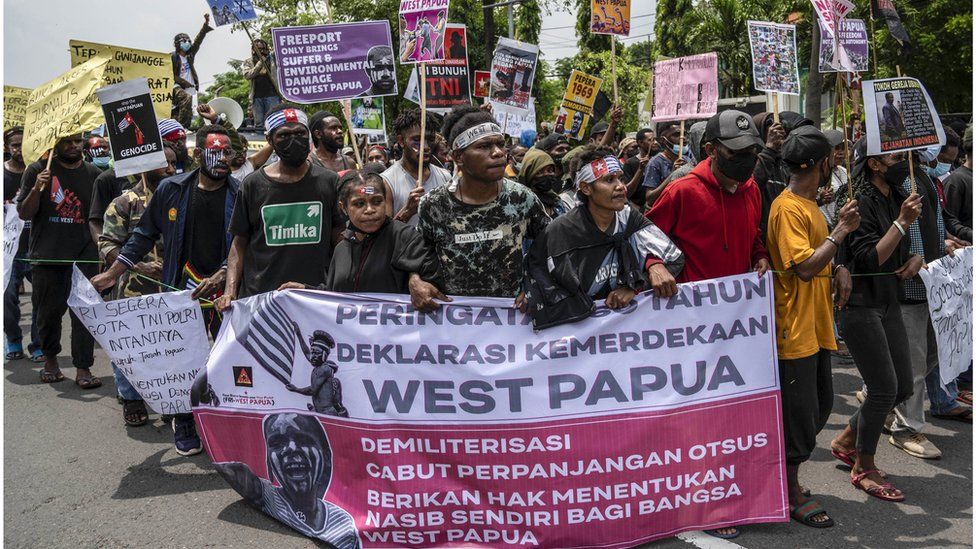
Some analysts estimate up to 450,000 soldiers, insurgents and civilians have died in the conflict since it began in the 1960s.
The Indonesian military has also been accused of serious human rights abuses going back to the 1960s. Last year, UN-appointed experts said recent abuses included child killings, disappearances, torture and enforced mass displacement.
What is the current state of the conflict?
Pro-independence fighters have been mounting more frequent attacks since 2018.
The security situation in the highlands deteriorated after the military intelligence chief for West Papua was shot dead by separatists in 2021.
The West Papua National Liberation Army (TPNPB) – the armed wing of the Free Papua Movement – has said it carried out several of these attacks.
It has long been labelled a terrorist organisation by the Indonesian government.
In 1996, the TPNPB kidnapped 26 members of a World Wildlife Fund research mission in Mapenduma. Two Indonesians in the group were killed by their captors, but the remaining hostages were eventually freed within five months.
More than a decade later, a convoy of 16 buses carrying gold mine employees was attacked. This resulted in two deaths and five people injured.
In 2018, 25 Indonesian construction workers were abducted from their camp in Nduga by a Papuan armed group, with at least 17 of them being killed.
Tens of thousands of people were displaced during the military operation that followed.
This is the same area where Mr Mehrtens, the New Zealand pilot, was kidnapped. It is on the route of the controversial Trans-Papua Highway, a road being built across the mountains which many Papuan nationalists believe is a threat to their identity and traditional way of life.
Why have separatists targeted Westerners?
Following Mr Mehrtens’ kidnapping, a TPNPB spokesman said that it would now target “all foreigners: the US, EU, Australians and New Zealanders”.
He claimed that those countries had supported Indonesia’s rule by sending weapons and training soldiers over past decades. He said they had also turned a blind eye to Indonesia’s oppression in the region.
Human rights groups have also said those countries could speak up more about Indonesia’s human rights abuses. Australia, for example, has long had close defence ties with Indonesia.
Papuan grievances against Western governments also originate from those countries’ roles in allowing the flawed 1969 referendum to go ahead and to be approved by the UN.
Related Topics
-
-
24 September 2019
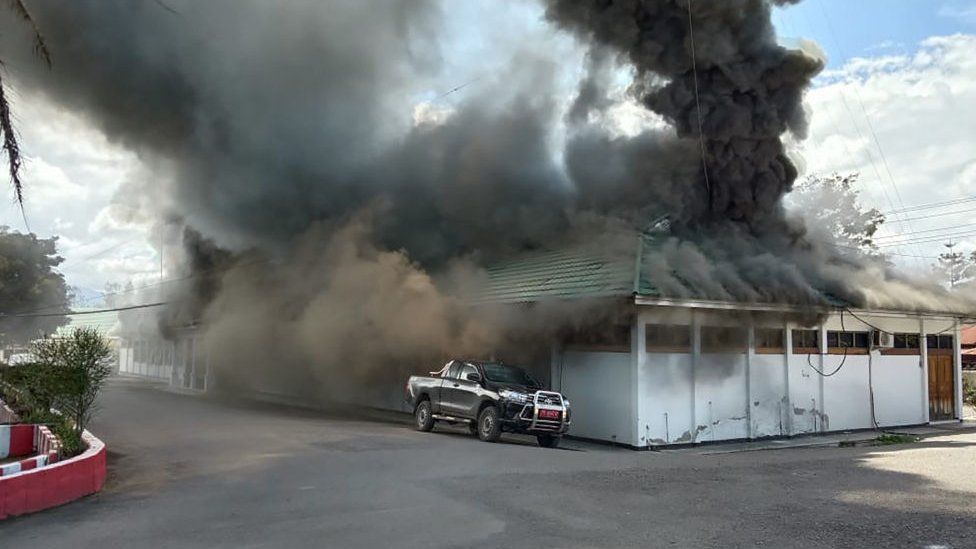
-
-
-
30 August 2022

-
-
-
11 October 2019

-


